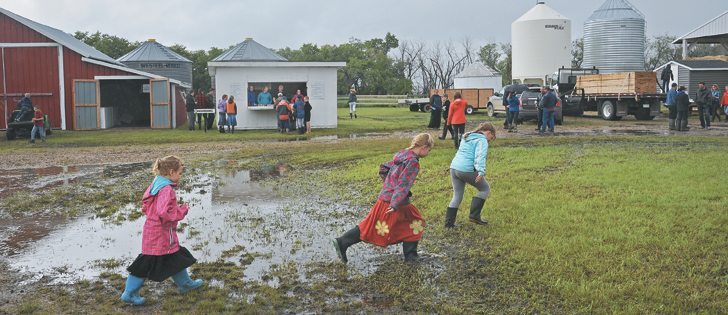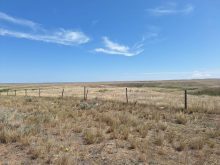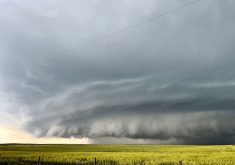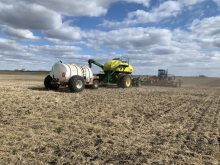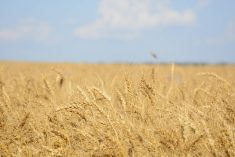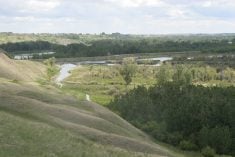Livestock also affected | Soggy conditions threaten seeded crops; feedlots brace for foot rot
Farmers across parts of southern Alberta have lake-front property where crops were growing two weeks ago.
From 120 to 260 millimetres of rain fell across the region south of High River, resulting in overland and river flooding and forcing evacuation of homes along a dozen rivers and creeks.
Kevin Serfas is one farmer with at least one 90 acre lake where crop used to be flourishing. Standing water was a common sight last week, particularly in fields south and east of Lethbridge.
Serfas and his father and brother manage 38,000 acres of cropland in southern Alberta, but it was their 5,000 head feedlot that caused the most concern.
Read Also

Farming Smarter receives financial boost from Alberta government for potato research
Farming Smarter near Lethbridge got a boost to its research equipment, thanks to the Alberta government’s increase in funding for research associations.
Like other cattle operations in feedlot alley, excess moisture in pens created mud, the need for extra bedding and increased concerns about foot rot.
On the crop side, 10 days of rain put spraying operations behind schedule, but a forecast for hot, sunny days was expected to allow a speedy return to many fields.
Doon Pauly, research scientist with Alberta Agriculture in Lethbridge, said it was fortunate the rain came over a nine-day period rather than in a quick deluge. That allowed some precipitation to infiltrate as it fell on areas in the south where it had previously been dry.
“I suspect we’re going to come through this pretty well,” said Pauly on June 23.
He said many acres were under water and depending on crop and soil type, some would be lost. Other areas will see yellowing and reduced production.
On the positive side, the healthy rain has drastically reduced the need for irrigation in coming days and “we’re going to see phenomenal growth very quickly,” Pauly said.
Elsewhere in Western Canada, wet, soggy conditions prevailed, raising concerns about crop development and the ability to spray pesticides.
In Saskatchewan, 100 to 150 mm of rain fell in parts of the south last week, causing overland flooding and standing water in several regions.
East-central and northeast Sask-atchewan, as well as southern Manitoba also saw rain last week and more was in the forecast as of June 23.
Nine to more than 80 mm of rain fell in Manitoba thunderstorms last week, as well as some hail. Most areas of the southwest received 25 mm or more, and more than 75 mm were reported in parts of the northwest. The Interlake region also saw 20 to 50 mm and spotty hail.
Bruce Burnett, CWB weather and crop specialist, said hot, sunny weather is needed to get crops growing quickly, to make up for time lost from later than usual seeding.
In southern Alberta, the steady rainfall caused more than 10 towns and municipalities to declare local states of emergency as river levels rose and there were threats of widespread flooding.
Among the regions hardest hit was the Blood Reserve, where several hundred people left their homes when the Belly River overflowed its banks.
Stephen Carr of the Alberta Emergency Management Agency said 400 to 500 people across the south were displaced at the peak of flooding threats.
Regional dams mitigated flood damage from river overflow. Evan Friesenhan, director of river forecasting, said the Oldman Dam reduced peak levels by 25 percent, the St. Mary Dam by 46 percent and the Waterton Dam by 16 percent.
Damage to secondary highways and rural roads was reported in several municipal districts and counties.
Lethbridge County and M.D. of Taber personnel were busy assessing conditions earlier this week.
About 100 properties and several thousand acres of farmland are affected by overland flooding in Lethbridge County. It is working to obtain disaster assistance funding.
Jon Hood, agriculture fieldman for the M.D. of Taber, said farmers had plenty of warning to move livestock and equipment away from rivers and creeks, which limited the damage. He said farmers were itching to begin pumping water and many had begun doing so on June 23.




